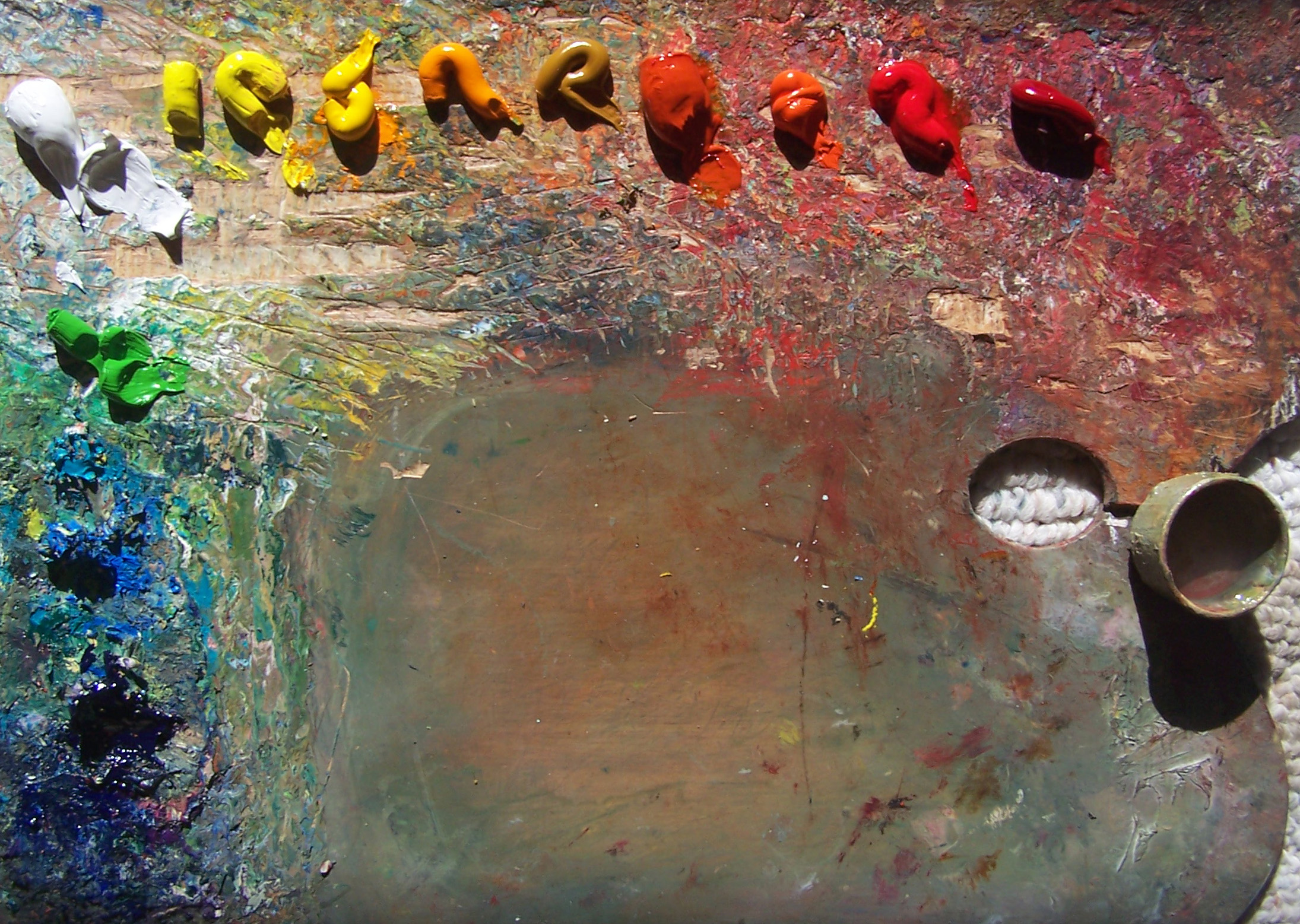Materials (oil)
- Brushes, recommend include sizes #2, 4, 10, 20
- Palette knife (optional)
- Paint thinner
- Paper Towel
- Plastic bag
- Canvas. Preferred size 12”X16” (1 per lesson)
- Sketch book (8”x10”)
- Charcoal or pencil
- Palette
Palette / Horizontal:
Titanium-Zink White, Cadmium Lemon, Cadmium Yellow, Yellow Ochre*, Cadmium Orange*, Cadmium Red, Alizarin Crimson
Palette / Vertical:
Chrome Green*, Oxide of Chromium*, Cerulean Blue*, Ultramarine Blue, Prussian Blue
*- optional
Outline
Introduction
Painting styles - “Alla Prima” (Paint wet on wet).
Major steps in creating still life
- Still Life Set-Up
- The choice of format
- Sizes and Proportions
- Rhythm
- Perspective
- Contrast-Nuance
- Light source Making objects and style fit together
Painting Still Life Alla Prima gives you all the freedom of expression in colors. The painting process has a philosophy of exploration, and goes from particular details to general features and back with each loop sharpening the details, colors, composition.
Still Life Set-Up, this is quite an important starting point of your work.
- During the set-up you should keep in mind that objects should form some unified picture.
- Make sure that your set-up is not a pile of unrelated things.
- In most cases there is some object acting as the center of your composition.
- Objects with defined and clear shape usually turn out successfully in painting; they simplify the work of the artist and may be good for the beginner.
- Light underlines the shape of the objects and brings a final touch of mood to your composition; therefore the right choice of light direction and source is quite essential.
Painting process:
- Make a couple compositional sketches in your sketchbook. Choose angle of view, format and shapes, what to emphasize, evaluate proportions, tonal values, silhouettes, light source. Composition concludes the formation of your idea. Practically this starts from the choice of canvas format and position of objects; the composition decisions are made almost up to the final brush stroke.
- Observe the tonal and color relationships between shadowed and sunny areas.
- Initial Drawing can be made with charcoal or brush, and it outlines the contours, tone, proportions and perspective.
- Make a to-do plan. Evaluate the balance of light and dark masses, see direction of the light and even feel the mood. Set correct values.
- Start with the most obvious and then go to unclear. Block in the basic colors and shapes.
- In order to achieve fresh feeling in resulting painting fill patterns of colors correctly as you can, and don’t redo much.
- Start your painting using big brush strokes to define big relations.
- Brushstroke should be thought out three times and executed only once.
- Paint quickly. Start with only a little paint on your canvases and avoid mixing colors on the palette. If you use white too soon and you fussing too much over the same area, you will have chalkiness on your painting.
- Exaggerate the differences between colors and tonal values!!!
- When you start to work on details just suggest.
- Step back frequently so you can see the whole picture.
* Diffused edges enhance the sense of atmosphere. Hard edges can make your painting flat.
* Colors look more intense when placed next to their compliments.Aerial perspective affects both tone and color. There should be a noticeable reduction in the degree of tonal contrast as the distance between you and what you paint increases.
*Aerial perspective affects both tone and color. There should be a noticeable reduction in the degree of tonal contrast as the distance between you and what you paint increases.

